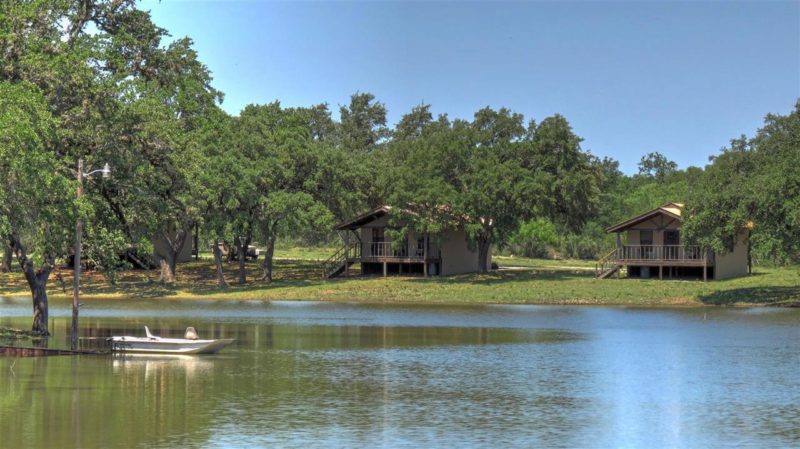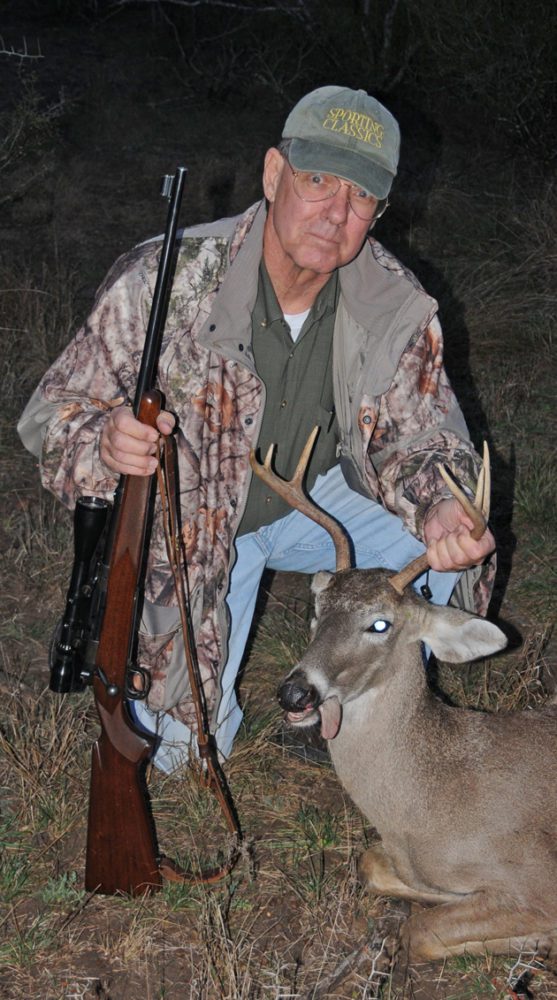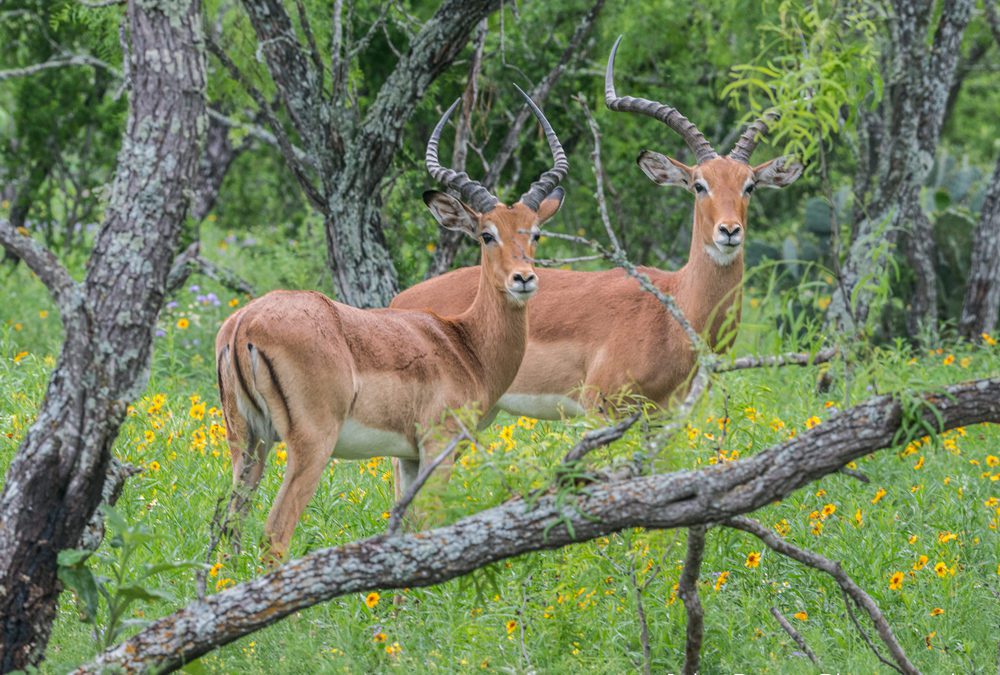Hondo, Texas – On 777 Ranch, 10 miles south of here, you’ll see small herds of more than 60 species of antelope, deer, goats, sheep, gazelles, other ungulates, and bovines. Among them are the rare Barashinga and Arabian oryx. Whitetails abound. A drive through the ranch’s 6,000 acres—roughly 10 square miles—is like being on safari without leaving the U.S.
I’ve known of 777 for decades; it received our Award of Excellence in 2008. When I began working on Classic Sporting Lodges, our forthcoming book profiling about 60 of the finest hunting and fishing destinations in North America, I decided to finally check it out.
My goals for visiting the 777 were simple: I wanted to see its operations firsthand, get to know owner Jeff Rann and the idea behind the ranch, and experience a whitetail hunt just like any other client.
The 777 is well known for its SCI record book “Estate” trophies. Breeding high-scoring bulls is not left to happenstance. Dominant bulls, left to their genetics, will kill young males. If allowed to breed unchecked, bucks with inferior antlers will sire offspring with inferior racks. To preserve stocks of truly trophy bucks, those that don’t measure up must be humanely culled.
After picking up my Texas general non-resident hunting license, our first stop was the 777’s 100-yard range to be sure the rifle had survived Delta’s baggage handlers. I’d chosen Nosler’s 100-grain Ballistic Tip loads for my .257 Roberts, the perfect cartridge for whitetails. I’d found that my go-to deer rifle, a pre-’64 Model 70 topped by a vintage B&L Balvar 8 from the 1950s, produced one-inch groups with them. My rule of thumb is one shot, one deer. Two shots at the range showed us the rifle had held its zero.
Jeff led me to a shooting box overlooking about 10 acres and a couple of feeders. This section of the ranch is set aside to thin surplus whitetail bucks and does. The leading edge of a cold front was moving in, bringing haze thickening into fog. We reached the blind about 3:30 p.m., and for an hour nothing moved. Then a doe came out, trotted maybe 50 yards into the pasture, froze, lifted her head, pivoted, and dashed back into the brush. Clearly she was spooked, but not by us. We sat silently; only our binoculars moved.

Guests of 777 stay in African-style lakeside cabins.
Does came and went over the next hour. As dusk settled, a small six pointer joined them, and then a nicer buck of eight points. The small buck lacked brow tines, and in Jeff’s experience, any bucks he sired would lack them as well. He told me to shoot it. It was about 100 yards away; I held behind its shoulder, and squeezed the trigger. It jumped, turned sharply, and vanished. We found it not 50 yards from the first spatter of red froth, evidence of a solid heart/lung shot. Nosler’s Ballistic Tip bullet had performed superbly.
About a third of Jeff’s clients hunt from shooting boxes, another third spot game from jeeps and then stalk, and the rest hunt on foot. Located on the edge of Texas’s Hill Country, the terrain rolls easily over gentle ridges and down into shallow swales. Much of it is tufted with thick swaths of shrubby blackbrush and broken with savannahs dotted with gnarly mesquite. The landscape reminds Jeff of the northern Transvaal.

Lacking brow tines, the six pointer the author culled would probably never have sired a trophy.
A professional hunter in Africa since 1977, Jeff was SCI’s International Professional Hunter of the Year in 1998 and spends summers guiding in Zambia, Tanzania, and South Africa. He purchased 777 from Slim Crapps in 2002. Crapps was apparently a gambler, apparently addicted to poker, and apparently named the ranch after his winning hand. Along with hosting hunters, 777 is the site for a summer whitetail camp for boys run by Texas Outdoor Camps. Co-sponsored by Texas Department of Parks and Wildlife, the camp teaches shooting, archery, duck calling, tracking, and fishing for largemouth bass in 777’s ponds.
Hunt 777 in April and early May when everything is in bloom as only it can be in Texas and before thick brush is so fully leafed out that game cannot be seen. Or come later in the year from October into mid-December. Temperatures have moderated by then, leaves are falling, and many species are in rut.
For more information, visit 777ranch.com.

